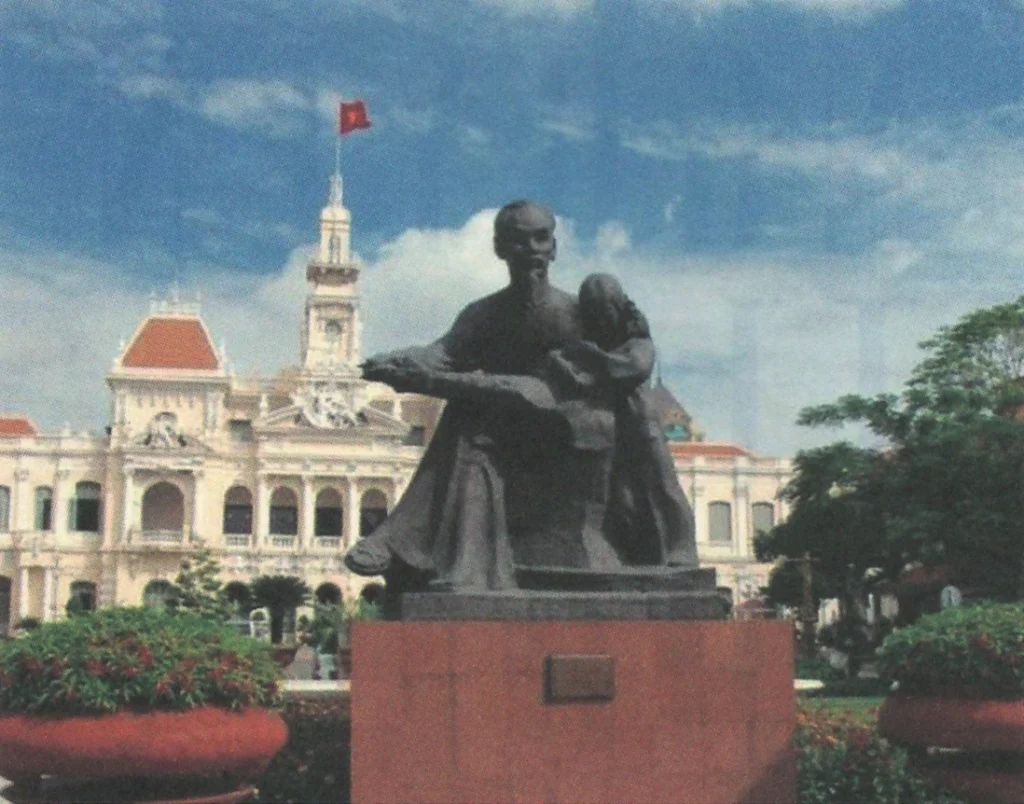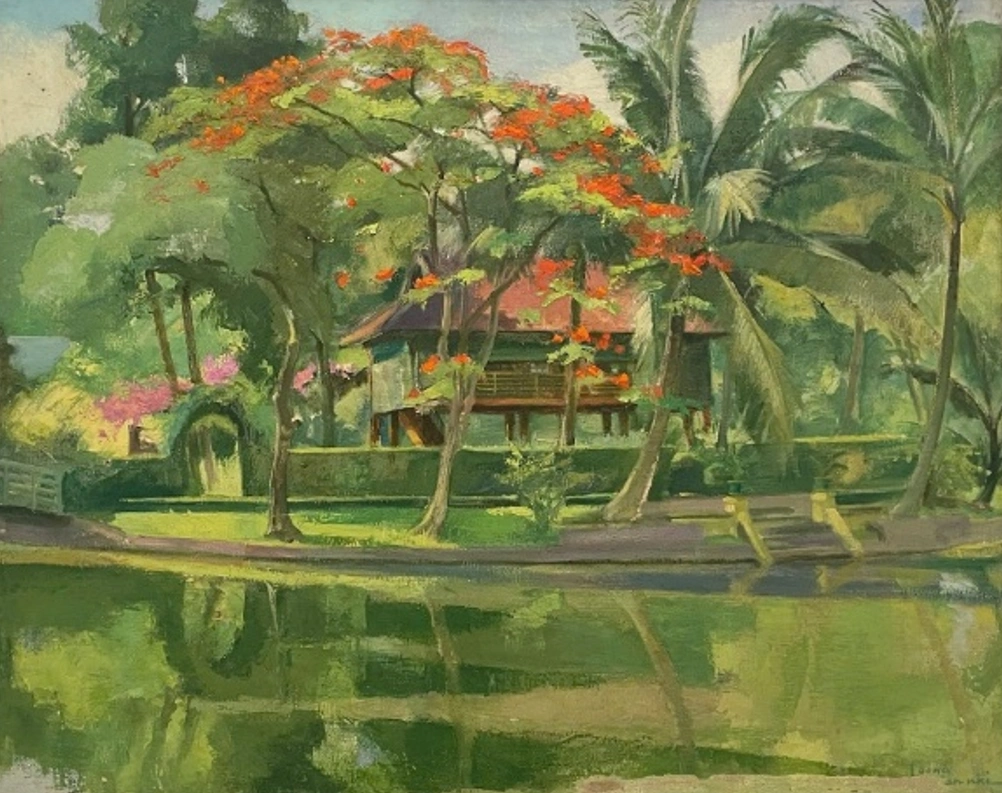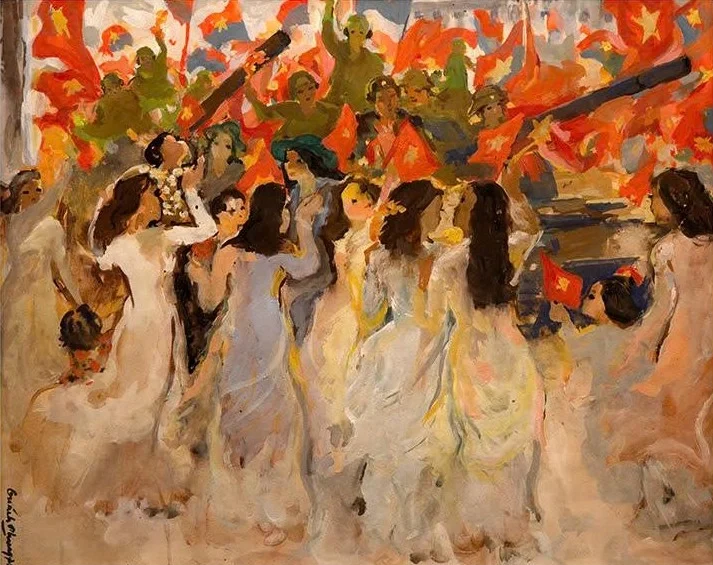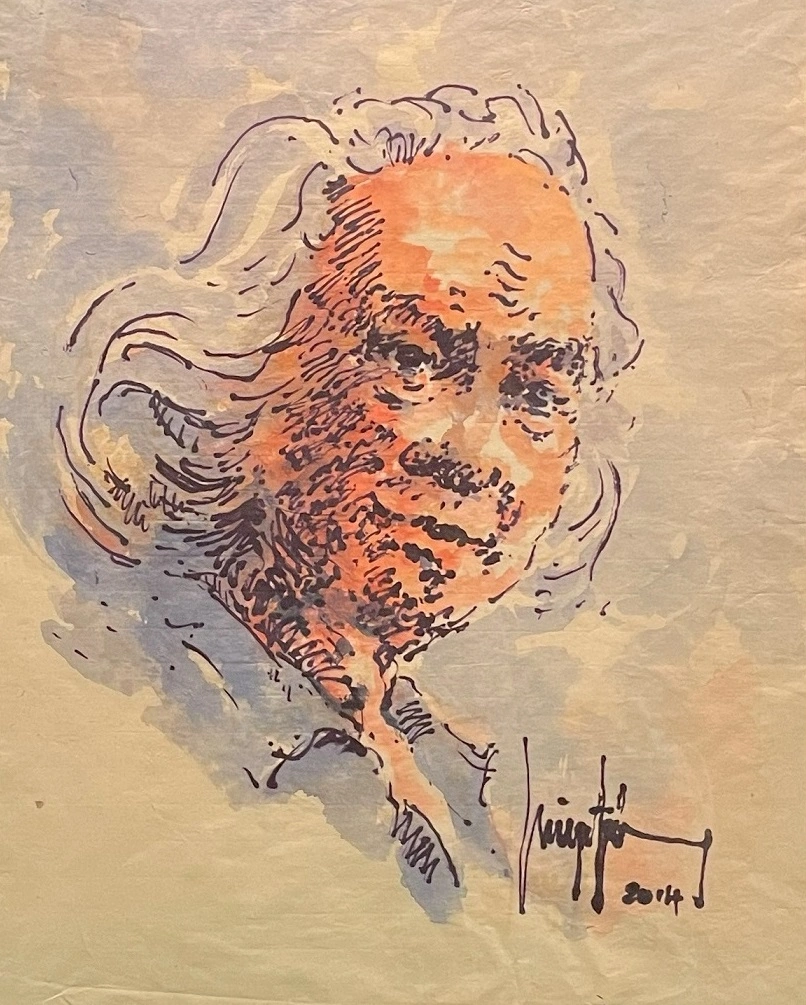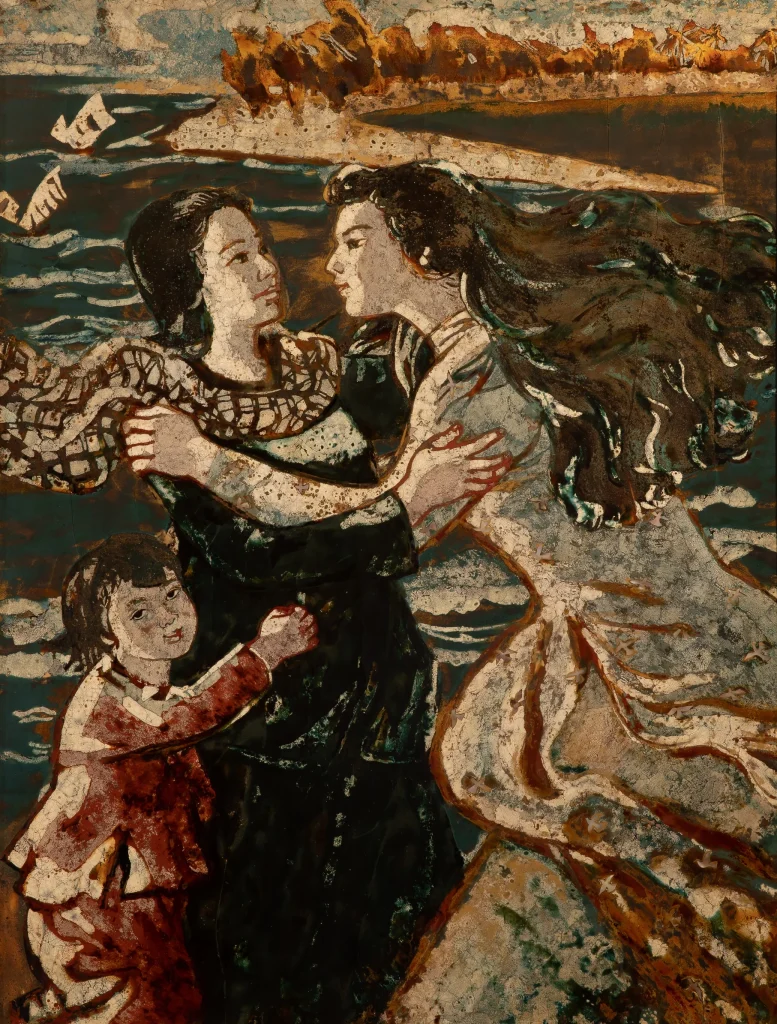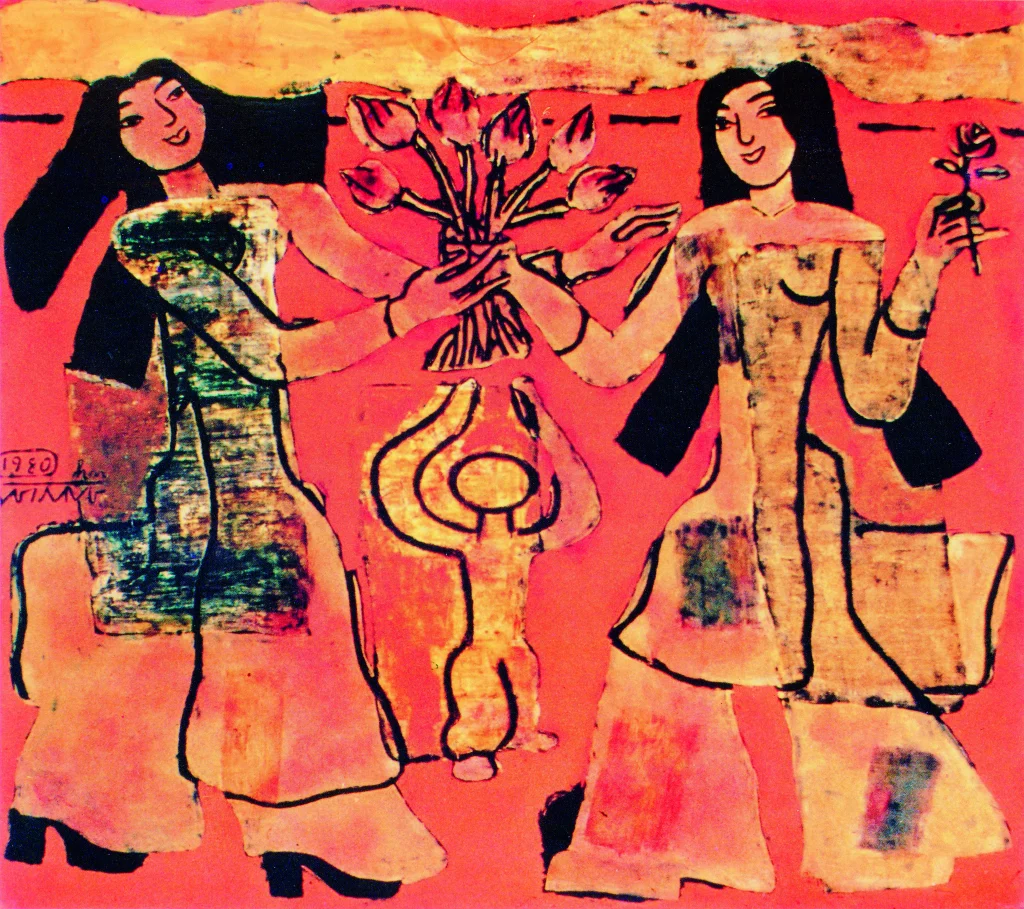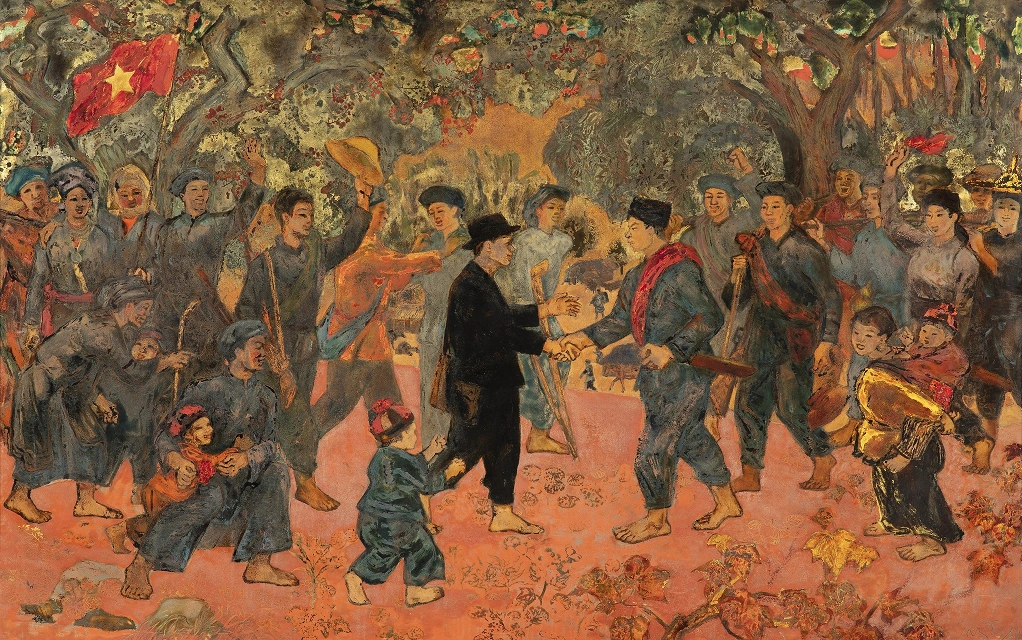
The predecessor of Việt Nam People’s Army was Việt Nam Propaganda Liberation Army, established on December 22, 1944. The founding ceremony was held in the Sam Cao forest located between Trần Hưng Đạo and Hoàng Hoa Thám communes in Nguyên Bình district, Cao Bằng province. Initially, the army consisted of 34 soldiers, including 3 women, with 19 guns of various types, commanded by Võ Nguyên Giáp; Hoàng Sâm was chosen as the team leader; Xích Thắng, aka Dương Mạc Thạch, was the political commissar; Hoàng Văn Thái was in charge of intelligence and combat planning; Lâm Cẩm Như, aka Lâm Kính, was in charge of political work; Lộc Văn Lùng, aka Văn Tiên, was the manager. The first battle of Việt Nam Propaganda Liberation Army was the battle of Phai Khắt, Nà Ngần on December 25 and 26, 1944.
On April 15, 1945, the Northern Military Revolutionary Conference held in Hiệp Hòa, Bắc Giang decided that Việt Nam Propaganda Liberation Army would merge with the National Salvation Army commanded by Chu Văn Tấn, and change its name to Liberation Army, the main military force of Việt Minh to seize power in 1945. The unification ceremony was held on May 15, 1945 in Thàn Mát forest, Định Biên commune, Định Hóa district (Thái Nguyên).
During this period, the Propaganda Liberation Army helped shelter and support the spy force of the United States Strategic Intelligence Agency when this group strayed into Việt Nam. At the same time, Archimedes Patti, the commander of this spy force, contacted Hồ Chí Minh and Võ Nguyên Giáp, and together with other spies in the common front against Japan, played a major role in the development of the Liberation Army, contributing directly and indirectly to the construction of logistics, equipment, weapons, infrastructure and expanding the human resources of this force.
On August 16, 1945, during the August Revolution, when attacking Thái Nguyên, the Liberation Army had about 450 soldiers, organized into a squad (battalion), led by Lâm Cẩm Như. After 7 days, the Japanese army in Thái Nguyên agreed to surrender to the Liberation Army. (According to Wikipedia)
To commemorate the milestone related to this important day, literary and visual works were created by artists. For example, artist Nguyễn Văn Tỵ created ‘Bắc Sơn Guerrilla returns to Bản Pình’; ‘Two armies meeting’; Artist Dương Hướng Minh painted ‘Spring in Bản Quặng’ recording the events before and after December 22, 1944.
Artist Nguyễn Văn Tỵ wrote: “Returning to Hà Nội in 1954, in 1955 there was work to prepare for the establishment of Việt Bắc autonomous region. I went to Võ Nhai, Đình Cả, then to Ngân Sơn, Pắc Bó to search for the footprints of Bắc Sơn guerrillas, the first images of “Việt Nam Propaganda Liberation Army” and the “National Salvation Army”. These two armies met in Pình and Pài villages. The footprints of the guerrillas reminded me of the ancient traditions of our ancestors fighting the enemy.”
After that, artist Nguyễn Văn Tỵ created two historical paintings: “Bắc Sơn Guerrillas return to Bản Pình” was completed in 1957, the painting “Two armies meeting” was not completed until more than ten years later, in 1968.
The painting tells the story of Việt Nam Propaganda Liberation Army led by Comrade Văn (General Võ Nguyên Giáp), the name of the main army of Việt Minh Front from December 1944 to May 1945. This was a military organization along with the National Salvation Army led by Comrade Chu Văn Tấn. The two armies met in Pình village, merged, and were considered the predecessor of Việt Nam People’s Army. The founding day of Việt Nam Propaganda Liberation Army, December 22, was later chosen as the traditional day of Việt Nam People’s Army.
Viet Art View would like to respectfully introduce to art lovers the work ‘Two armies meeting’ created by artist Nguyễn Văn Tỵ (1917-1992) in lacquer in 1968. The painting is currently in the collection of Việt Nam Fine Arts Museum.
Articles are compiled by VIET ART VIEW
Copyrights belong to VIET ART VIEW


